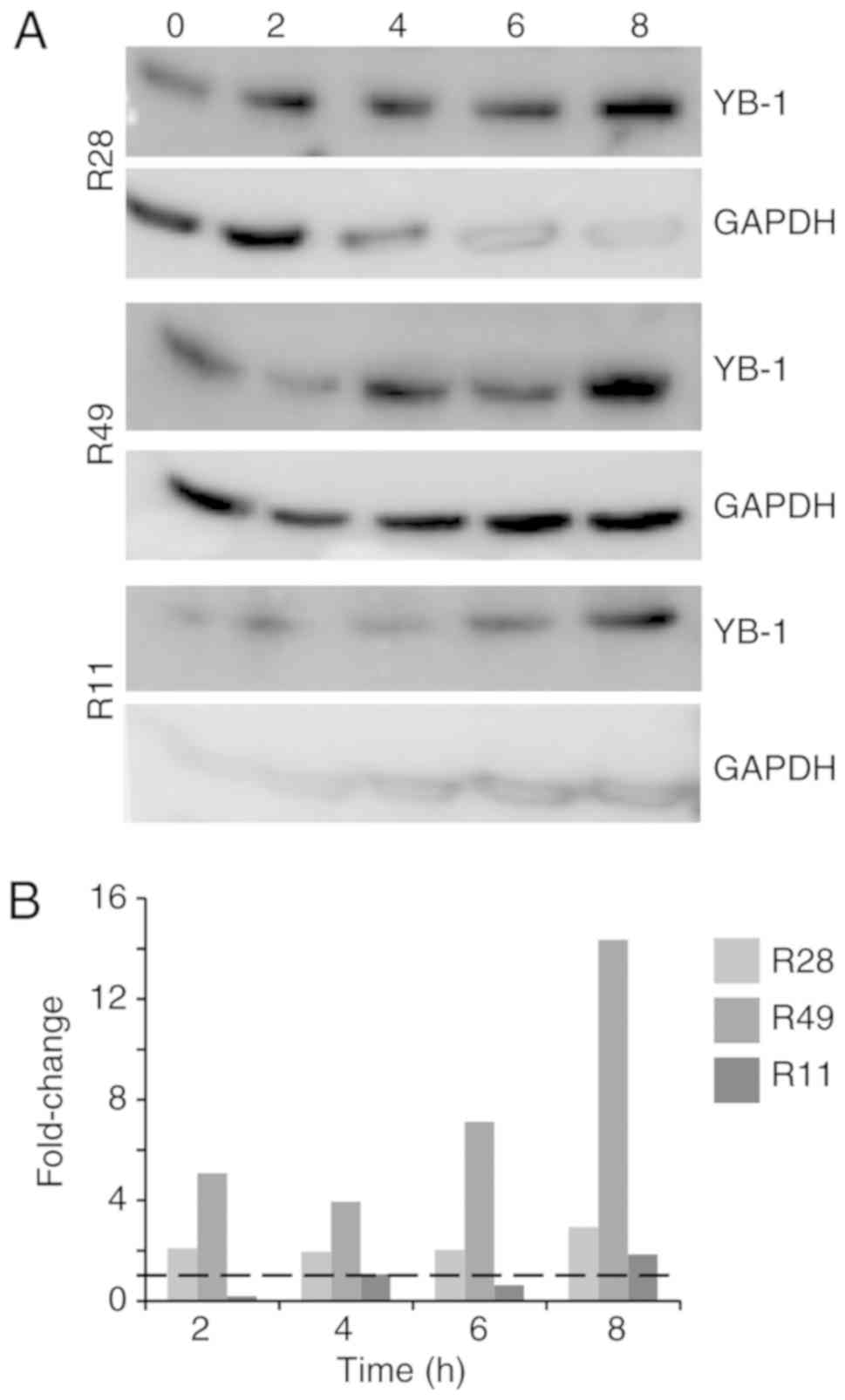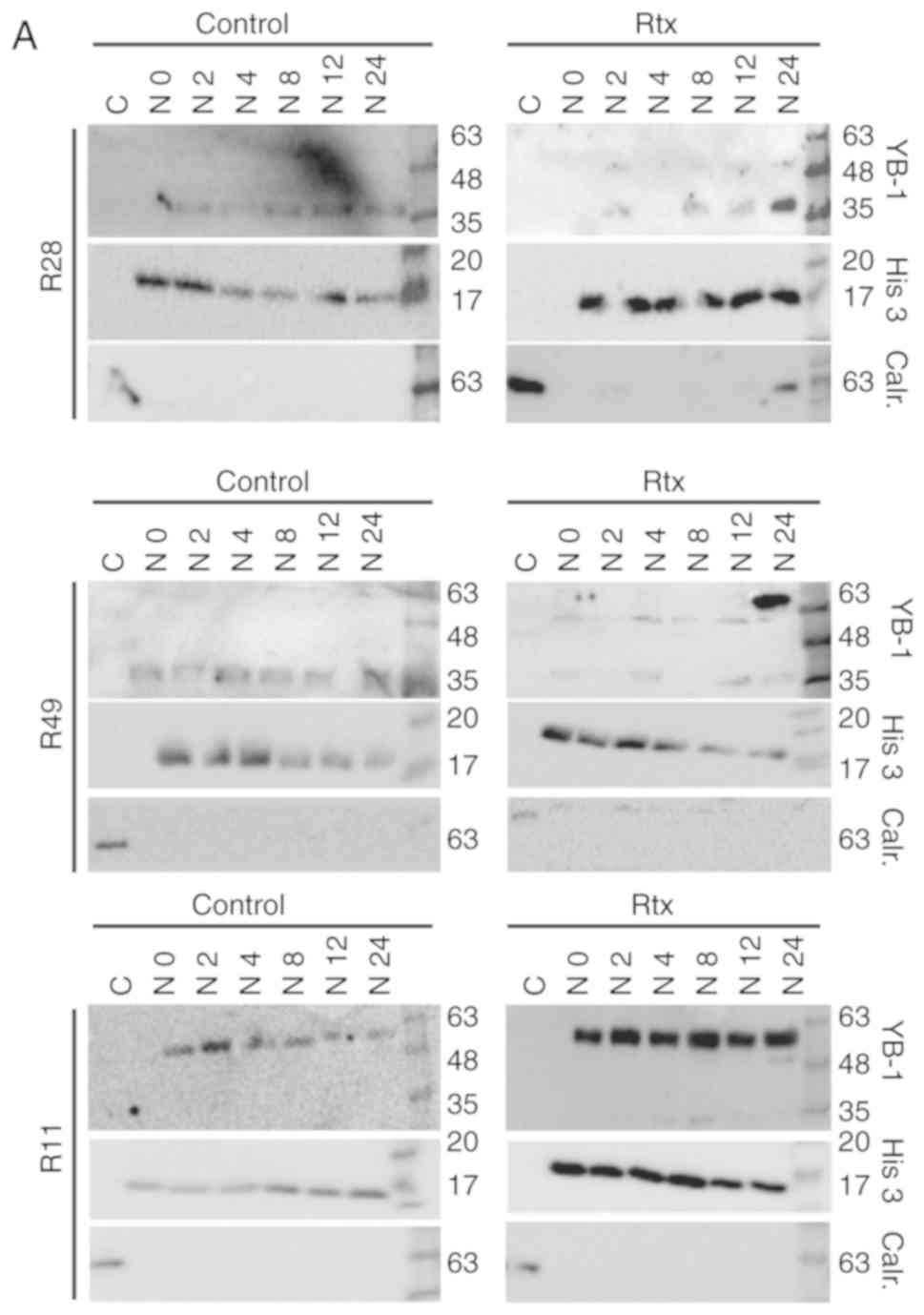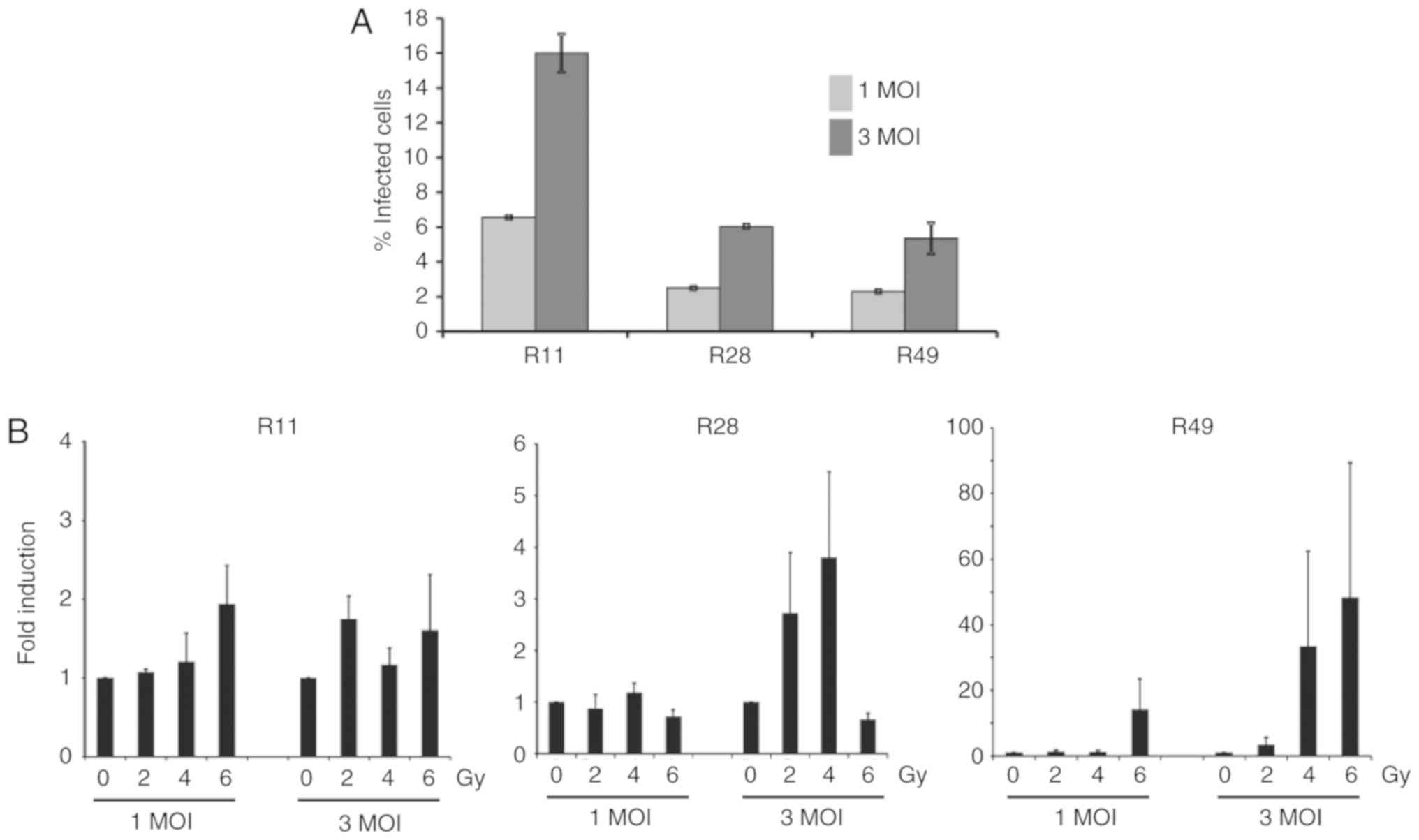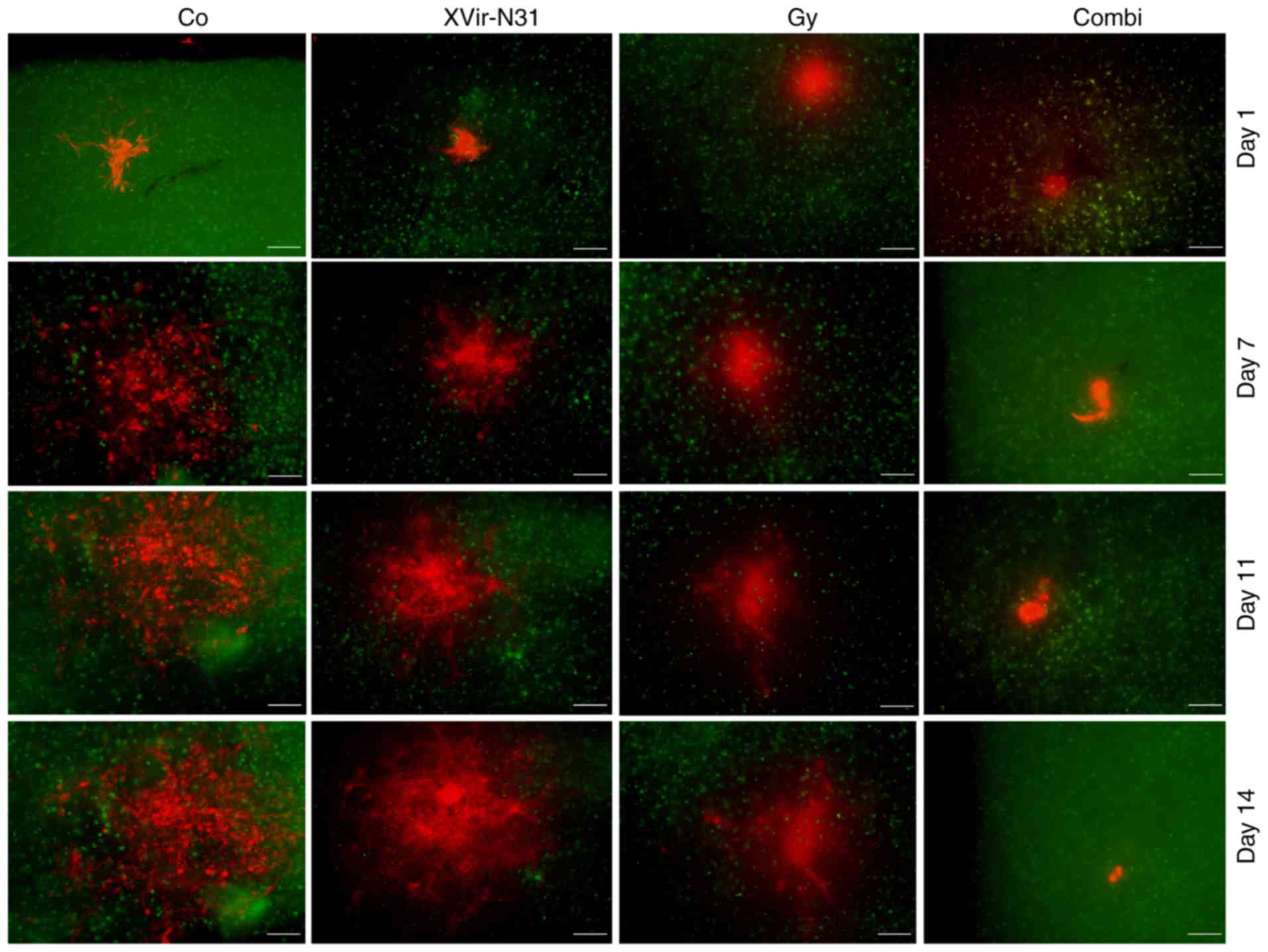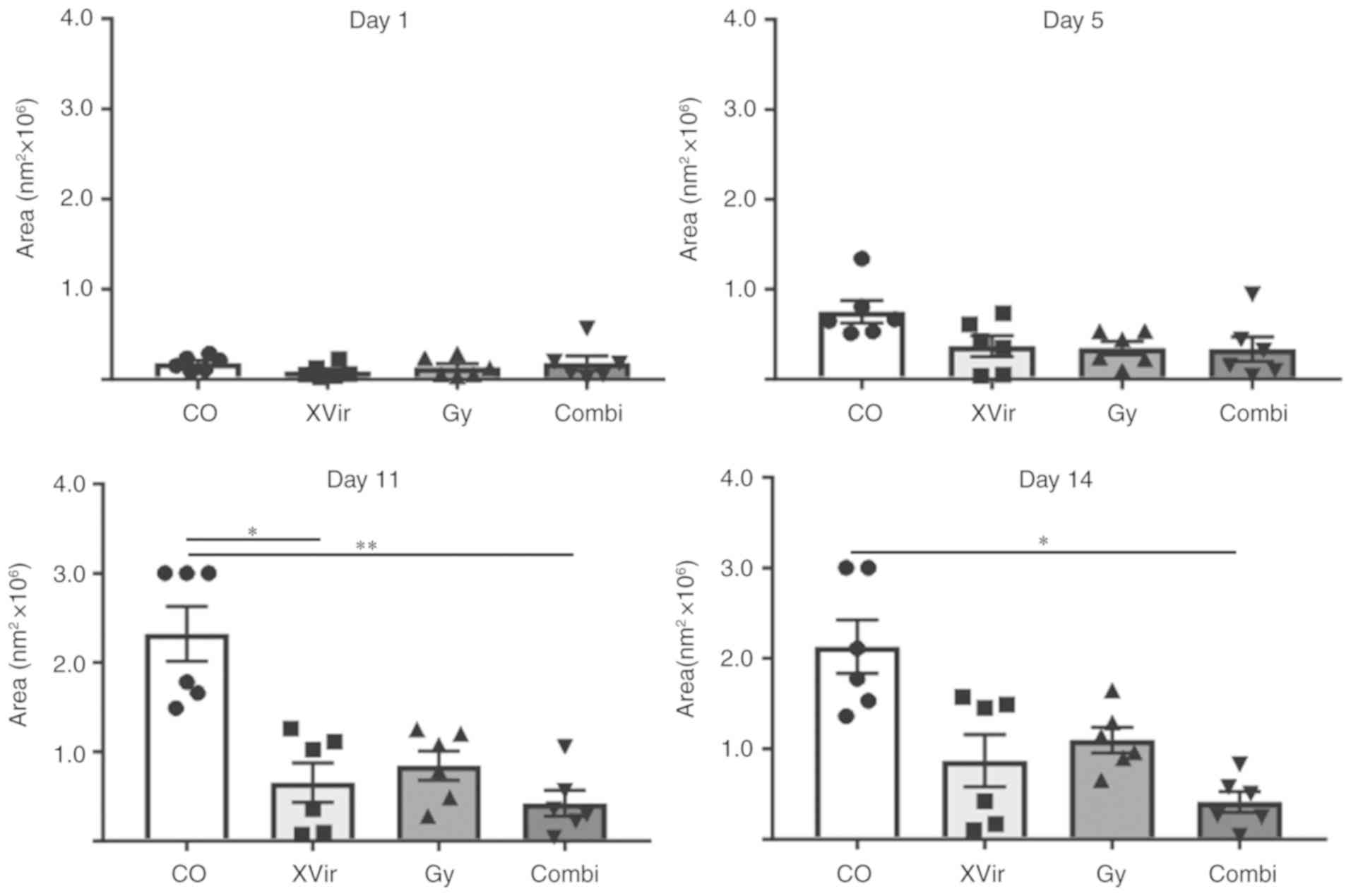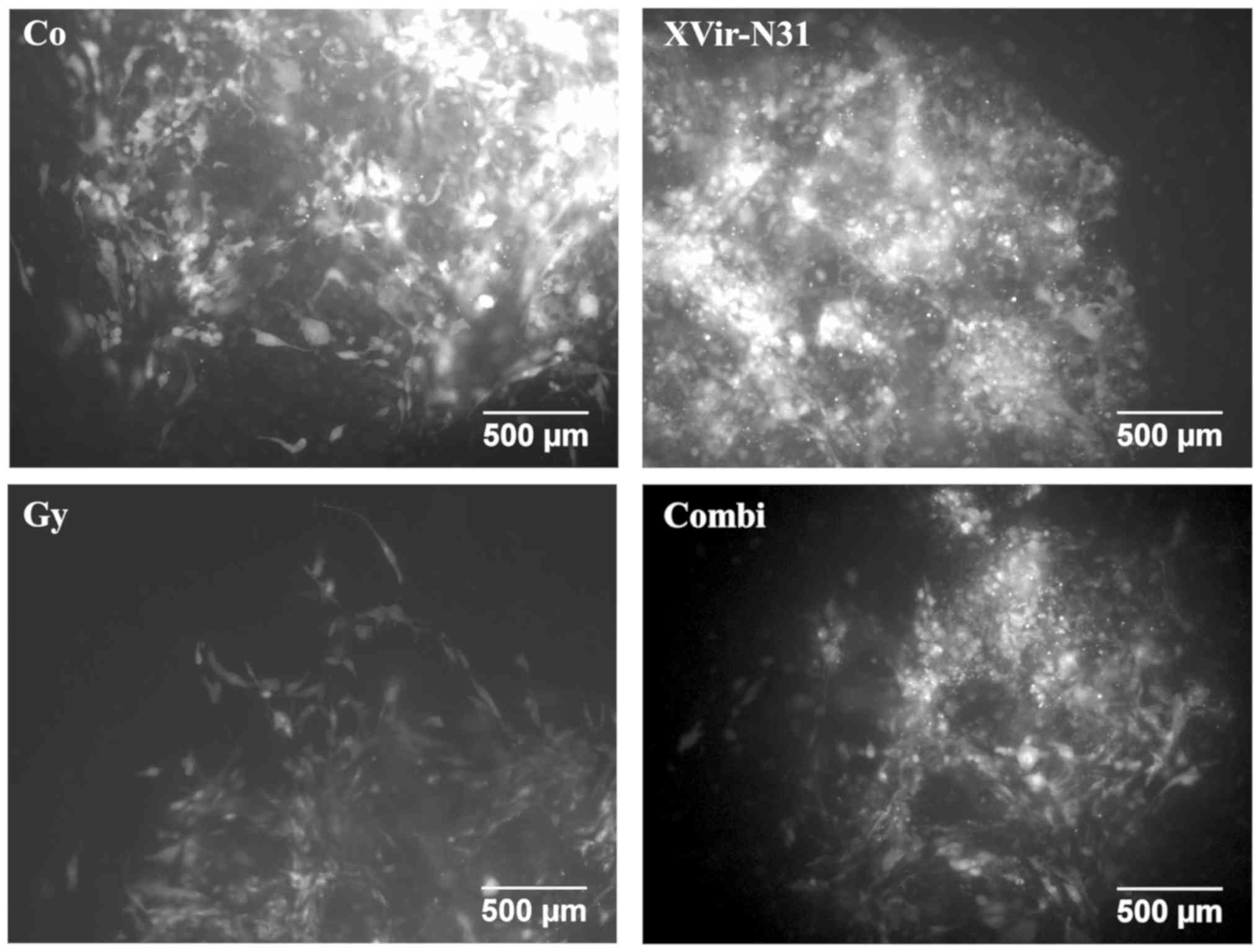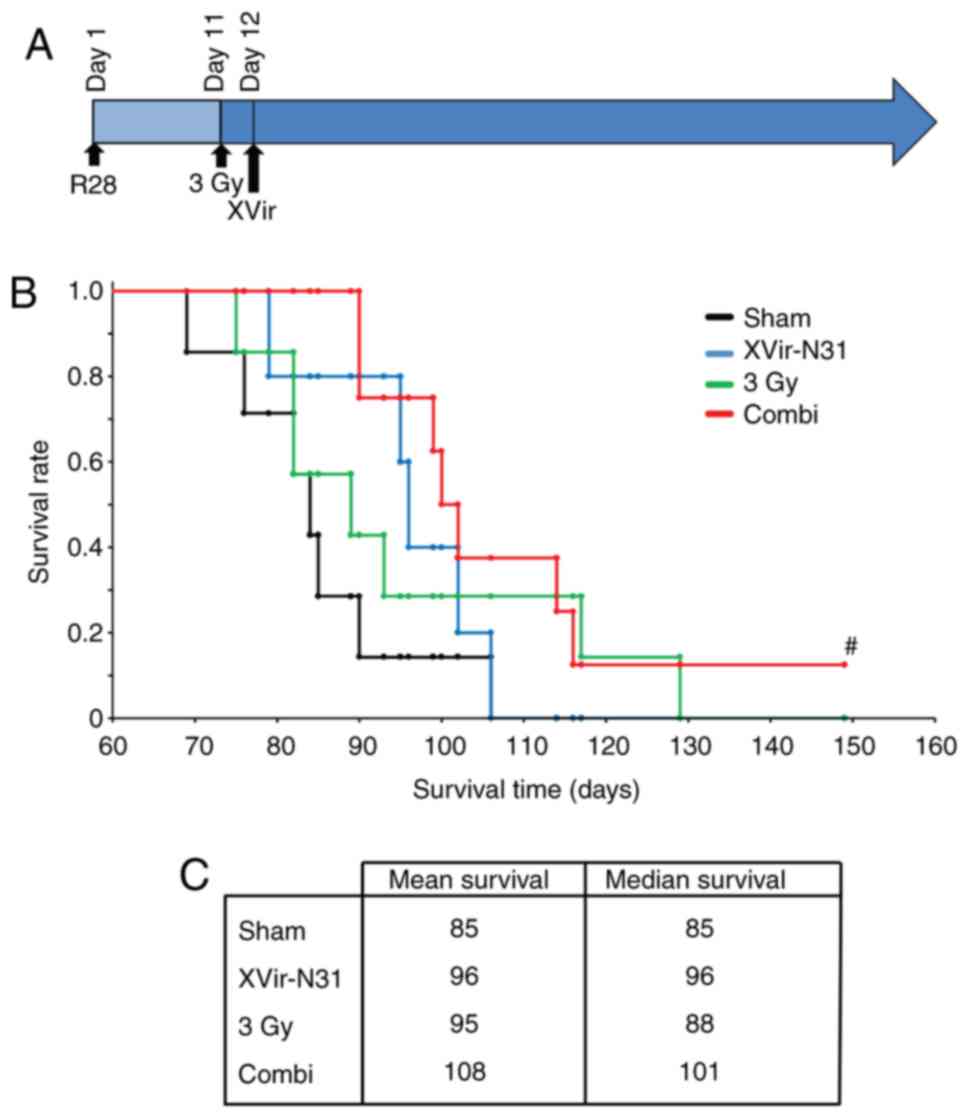|
1
|
Stupp R, Taillibert S, Kanner A, Read W,
Steinberg D, Lhermitte B, Toms S, Idbaih A, Ahluwalia MS, Fink K,
et al: Effect of tumor-treating fields plus maintenance
temozolomide vs maintenance temozolomide alone on survival in
patients with glioblastoma: A randomized clinical trial. JAMA.
318:2306–2316. 2017. View Article : Google Scholar : PubMed/NCBI
|
|
2
|
Auffinger B, Spencer D, Pytel P, Ahmed AU
and Lesniak MS: The role of glioma stem cells in chemotherapy
resistance and glioblastoma multiforme recurrence. Expert Rev
Neurother. 15:741–752. 2015. View Article : Google Scholar : PubMed/NCBI
|
|
3
|
Auffinger B, Tobias AL, Han Y, Lee G, Guo
D, Dey M, Lesniak MS and Ahmed AU: Conversion of differentiated
cancer cells into cancer stem-like cells in a glioblastoma model
after primary chemotherapy. Cell Death Differ. 21:1119–1131. 2014.
View Article : Google Scholar : PubMed/NCBI
|
|
4
|
Molina JR, Hayashi Y, Stephens C and
Georgescu MM: Invasive glioblastoma cells acquire stemness and
increased Akt activation. Neoplasia. 12:453–463. 2010. View Article : Google Scholar : PubMed/NCBI
|
|
5
|
Sunayama J, Matsuda K, Sato A, Tachibana
K, Suzuki K, Narita Y, Shibui S, Sakurada K, Kayama T, Tomiyama A
and Kitanaka C: Crosstalk between the PI3K/mTOR and MEK/ERK
pathways involved in the maintenance of self-renewal and
tumorigenicity of glioblastoma stem-like cells. Stem Cells.
28:1930–1939. 2010. View
Article : Google Scholar : PubMed/NCBI
|
|
6
|
Toulany M, Schickfluss TA, Eicheler W,
Kehlbach R, Schittek B and Rodemann HP: Impact of oncogenic K-RAS
on YB-1 phosphorylation induced by ionizing radiation. Breast
Cancer Res. 13:R282011. View
Article : Google Scholar : PubMed/NCBI
|
|
7
|
Sinnberg T, Sauer B, Holm P, Spangler B,
Kuphal S, Bosserhoff A and Schittek B: MAPK and PI3K/AKT mediated
YB-1 activation promotes melanoma cell proliferation which is
counteracted by an autoregulatory loop. Exp Dermatol. 21:265–270.
2012. View Article : Google Scholar : PubMed/NCBI
|
|
8
|
Lee Wu J, Yokom C, Jiang D, Cheang H,
Yorida MC, Turbin E, Berquin D, Mertens IM, Iftner PRT, et al:
Disruption of the Y-box binding protein-1 results in suppression of
the epidermal growth factor receptor and HER-2. Cancer Res.
66:4872–4879. 2006. View Article : Google Scholar : PubMed/NCBI
|
|
9
|
Kosnopfel C, Sinnberg T and Schittek B:
Y-box binding protein 1-a prognostic marker and target in tumour
therapy. Eur J Cell Biol. 93:61–70. 2014. View Article : Google Scholar : PubMed/NCBI
|
|
10
|
Schittek B, Psenner K, Sauer B, Meier F,
Iftner T and Garbe C: The increased expression of Y box-binding
protein 1 in melanoma stimulates proliferation and tumor invasion,
antagonizes apoptosis and enhances chemoresistance. Int J Cancer.
120:2110–2118. 2007. View Article : Google Scholar : PubMed/NCBI
|
|
11
|
Alemasova EE, Pestryakov PE, Sukhanova MV,
Kretov DA, Moor NA, Curmi PA, Ovchinnikov LP and Lavrik OI:
Poly(ADP-ribosyl)ation as a new posttranslational modification of
YB-1. Biochimie. 119:36–44. 2015. View Article : Google Scholar : PubMed/NCBI
|
|
12
|
Tiwari A, Rebholz S, Maier E, Dehghan
Harati M, Zips D, Sers C, Rodemann HP and Toulany M: Stress-induced
phosphorylation of nuclear YB-1 depends on nuclear trafficking of
p90 ribosomal S6 kinase. Int J Mol Sci. 19:pii: E24412018.
View Article : Google Scholar
|
|
13
|
Ewert L, Fischer A, Brandt S, Scurt FG,
Philipsen L, Müller AJ, Girndt M, Zenclussen AC, Lindquist JA,
Gorny X and Mertens PR: Cold shock Y-box binding protein-1
acetylation status in monocytes is associated with systemic
inflammation and vascular damage. Atherosclerosis. 278:156–165.
2018. View Article : Google Scholar : PubMed/NCBI
|
|
14
|
Pagano C, di Martino O, Ruggiero G, Maria
Guarino A, Mueller N, Siauciunaite R, Reischl M, Simon Foulkes N,
Vallone D and Calabrò V: The tumor-associated YB-1 protein: New
player in the circadian control of cell proliferation. Oncotarget.
8:6193–6205. 2017. View Article : Google Scholar :
|
|
15
|
Lage H, Surowiak P and Holm PS: YB-1 as a
potential target in cancer therapy. Pathologe. 2(Suppl 2):
S187–S190. 2008.In German. View Article : Google Scholar
|
|
16
|
Holm PS, Bergmann S, Jurchott K, Lage H,
Brand K, Ladhoff A, Mantwill K, Curiel DT, Dobbelstein M, Dietel M,
et al: YB-1 relocates to the nucleus in adenovirus-infected cells
and facilitates viral replication by inducing E2 gene expression
through the E2 late promoter. J Biol Chem. 277:10427–10434. 2002.
View Article : Google Scholar : PubMed/NCBI
|
|
17
|
Holm PS, Lage H, Bergmann S, Jürchott K,
Glockzin G, Bernshausen A, Mantwill K, Ladhoff A, Wichert A, Mymryk
JS, et al: Multidrug-resistant cancer cells facilitate
E1-independent adenoviral replication: Impact for cancer gene
therapy. Cancer Res. 64:322–328. 2004. View Article : Google Scholar : PubMed/NCBI
|
|
18
|
Mantwill K, Naumann U, Seznec J, Girbinger
V, Lage H, Surowiak P, Beier D, Mittelbronn M, Schlegel J and Holm
PS: YB-1 dependent oncolytic adenovirus efficiently inhibits tumor
growth of glioma cancer stem like cells. J Transl Med. 11:2162013.
View Article : Google Scholar : PubMed/NCBI
|
|
19
|
Bieler A, Mantwill K, Holzmüller R,
Jürchott K, Kaszubiak A, Stärk S, Glockzin G, Lage H, Grosu AL,
Gansbacher B and Holm PS: Impact of radiation therapy on the
oncolytic adenovirus dl520: Implications on the treatment of
glioblastoma. Radiother Oncol. 86:419–427. 2008. View Article : Google Scholar
|
|
20
|
Beier D, Hau P, Proescholdt M, Lohmeier A,
Wischhusen J, Oefner PJ, Aigner L, Brawanski A, Bogdahn U and Beier
CP: CD133(+) and CD133(−) glioblastoma-derived cancer stem cells
show differential growth characteristics and molecular profiles.
Cancer Res. 67:4010–4015. 2007. View Article : Google Scholar : PubMed/NCBI
|
|
21
|
Verhoog MB, Goriounova NA, Obermayer J,
Stroeder J, Hjorth JJ, Testa-Silva G, Baayen JC, de Kock CP,
Meredith RM and Mansvelder HD: Mechanisms underlying the rules for
associative plasticity at adult human neocortical synapses. J
Neurosci. 33:17197–17208. 2013. View Article : Google Scholar : PubMed/NCBI
|
|
22
|
Schwarz N, Hedrich UBS, Schwarz H, P A H,
Dammeier N, Auffenberg E, Bedogni F, Honegger JB, Lerche H, Wuttke
TV and Koch H: Human Cerebrospinal fluid promotes long-term
neuronal viability and network function in human neocortical
organotypic brain slice cultures. Sci Rep. 7:122492017. View Article : Google Scholar : PubMed/NCBI
|
|
23
|
Schindelin J, Arganda-Carreras I, Frise E,
Kaynig V, Longair M, Pietzsch T, Preibisch S, Rueden C, Saalfeld S,
Schmid B, et al: Fiji: An open-source platform for biological-image
analysis. Nat Methods. 9:676–682. 2012. View Article : Google Scholar : PubMed/NCBI
|
|
24
|
Erhardt W, Henke J and Haberstroh J:
Anästhesie und Analgesie beim klein-und heimtier. Schattauer
Verlag; 2004
|
|
25
|
Mutschelknaus L, Azimzadeh O, Heider T,
Winkler K, Vetter M, Kell R, Tapio S, Merl-Pham J, Huber SM, Edalat
L, et al: Radiation alters the cargo of exosomes released from
squamous head and neck cancer cells to promote migration of
recipient cells. Sci Rep. 7:124232017. View Article : Google Scholar : PubMed/NCBI
|
|
26
|
Zheng J, Dong W, Zhang J, Li G and Gong H:
YB-1, a new biomarker of glioma progression, is associated with the
prognosis of glioma patients. Acta Biochim Biophys Sin (Shanghai).
48:318–325. 2016. View Article : Google Scholar
|
|
27
|
Tong H, Zhao K, Zhang J, Zhu J and Xiao J:
YB-1 modulates the drug resistance of glioma cells by activation of
MDM2/p53 pathway. Drug Des Devel Ther. 13:317–326. 2019. View Article : Google Scholar : PubMed/NCBI
|
|
28
|
Wu J, Stratford AL, Astanehe A and Dunn
SE: YB-1 is a transcription/translation factor that orchestrates
the oncogenome by hardwiring signal transduction to gene
expression. transl Oncogenomics. 2:49–65. 2007.PubMed/NCBI
|
|
29
|
Wild-Bode C, Weller M, Rimner A, Dichgans
J and Wick W: Sublethal irradiation promotes migration and
invasiveness of glioma cells: Implications for radiotherapy of
human glioblastoma. Cancer Res. 61:2744–2750. 2001.PubMed/NCBI
|
|
30
|
Khan L, Soliman H, Sahgal A, Perry J, Xu W
and Tsao MN: External beam radiation dose escalation for high grade
glioma. Cochrane Database Syst Rev. 19:CD0114752016.
|
|
31
|
Woller N, Gürlevik E, Fleischmann-Mundt B,
Schumacher A, Knocke S, Kloos AM, Saborowski M, Geffers R, Manns
MP, Wirth TC, et al: Viral infection of tumors overcomes resistance
to PD-1-immunotherapy by broadening neoantigenome-directed T-cell
responses. Mol Ther. 23:1630–1640. 2015. View Article : Google Scholar : PubMed/NCBI
|
|
32
|
Sahebjam S, Sharabi A, Lim M, Kesarwani P
and Chinnaiyan P: Immunotherapy and radiation in glioblastoma. J
Neurooncol. 134:531–539. 2017. View Article : Google Scholar : PubMed/NCBI
|















